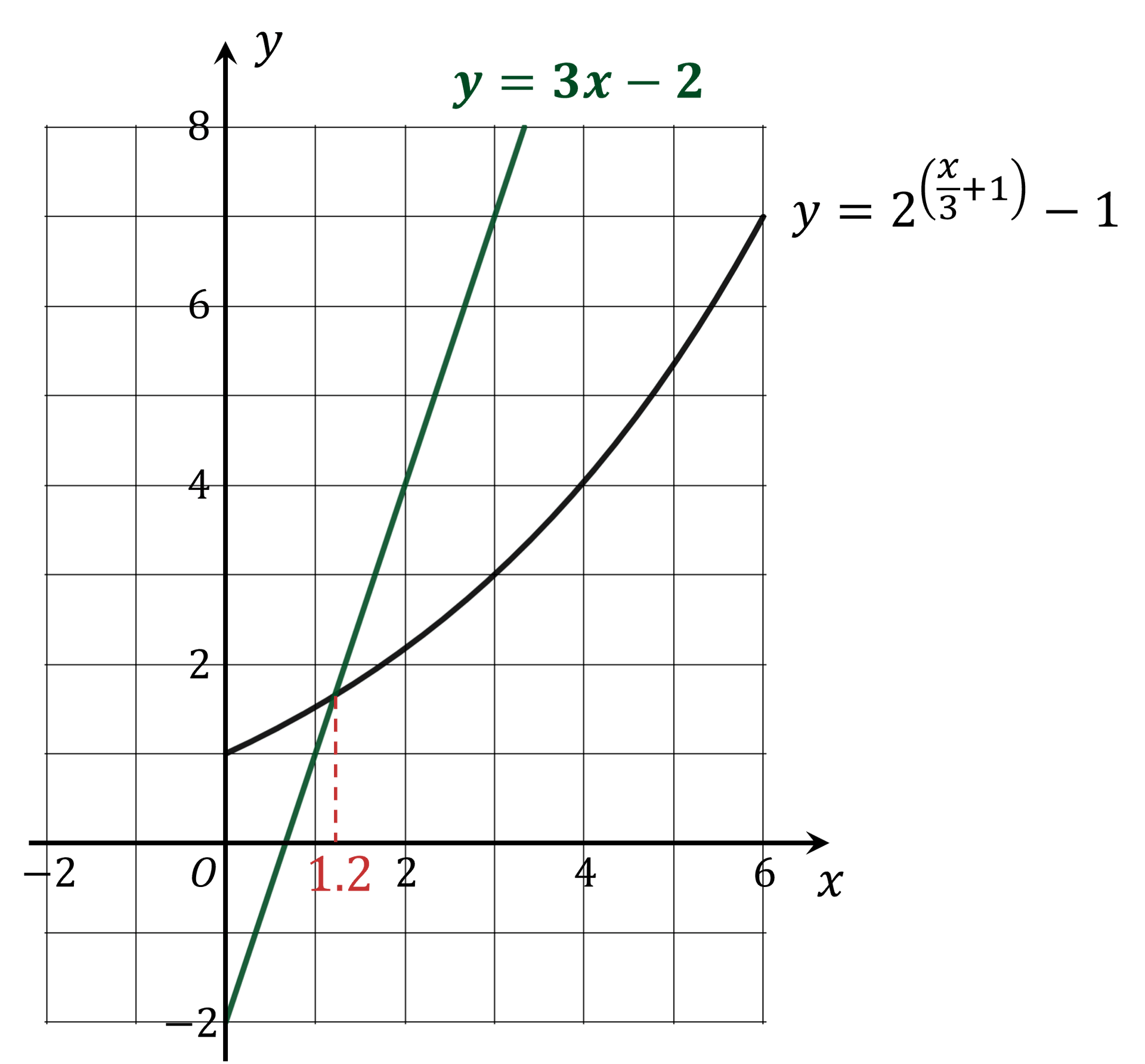Solving Equations Graphically
How can I solve equations graphically?
- A graph can be used to to help solve an equation like
- Draw the graphs of
and
- The solutions are the x-coordinates of the points of intersection
- Draw the graphs of
- This can be used when an equation is difficult or impossible to solve algebraically
- The solutions found will usually be approximations rather than exact answers
- The more accurate the graph, the more accurate the approximation
How can I estimate a solution by drawing a line on a graph?
- An exam question my ask you to estimate a solution by drawing a 'suitable' (or 'appropriate') straight line on a graph
- Often this will be a horizontal line
- For example solving
for some constant
- On a graph of
, draw the line
- The solutions are the x-coordinates of any points of intersection
- On a graph of
- Finding roots by seeing where a graph crosses the x-axis is a special case of this
- The x-axis is the horizontal line with equation
- The x-axis is the horizontal line with equation
- For example solving
- Sometimes it will be the line
- Draw this on the graph of
to find the solution(s) of
- Draw this on the graph of
- But sometimes determining the line to draw will be more challenging
- For example, 'By drawing an appropriate straight line on the graph of
, estimate the root of the equation
'
- We need to rewrite the equation in the form
, where
is the equation of a straight line
- Take the exponential of both sides ('exp cancels log')
- Take the cube root of both sides
- Multiply both sides by 2
- Add 3 to both sides
- That equation is equivalent to
- it will have the same solutions
- So we need to draw the line
on the graph of
- the x-coordinates of the points of intersection will give the solution(s) for
- But those are the same as the solution(s) for
- the x-coordinates of the points of intersection will give the solution(s) for
- For example, 'By drawing an appropriate straight line on the graph of
Exam Tip
- Be extra careful when drawing graphs on 'estimate solutions by using a graph' questions
- The accuracy of your answer will depend on the accuracy of your drawing
- Use a ruler for straight lines
Worked example
A graph of in the interval
is shown in the following diagram

By drawing a suitable straight line on the grid, show that the equation has a root in the interval
, and obtain an estimate for the value of that root.
Be careful here – we cannot just draw the horizontal line
That would only work if we had the graph of
Instead we must work on rearranging the equation
Start by getting the logarithm alone on the left-hand side
Use laws of logarithms to bring the power down in front of the logarithm
Then divide both sides of the equation by 2
Now take both sides to the power of 2
This will cancel the logarithm on the left-hand side ('exp cancels log')
Finally subtract 1 from both sides
Now the right-hand side is the function that is graphed on the diagram
So we need to draw the straight line
We can estimate the root by considering the x-coordinate of the point of intersection

root:

